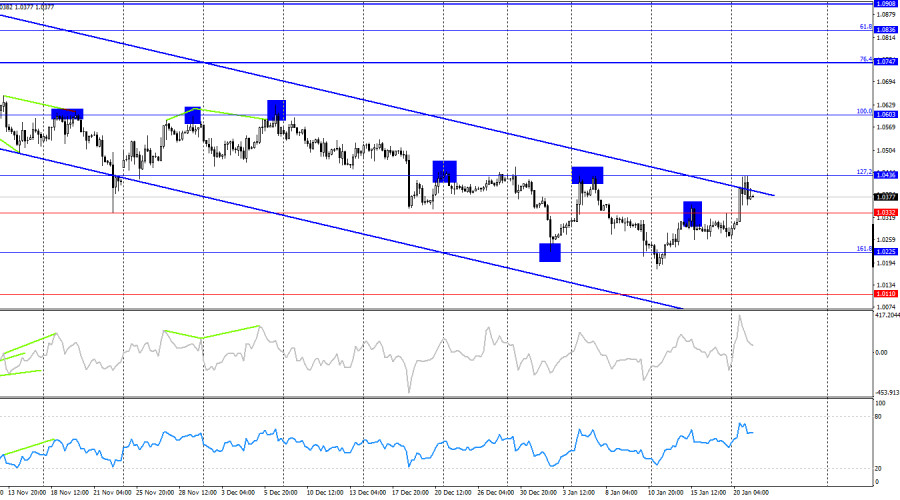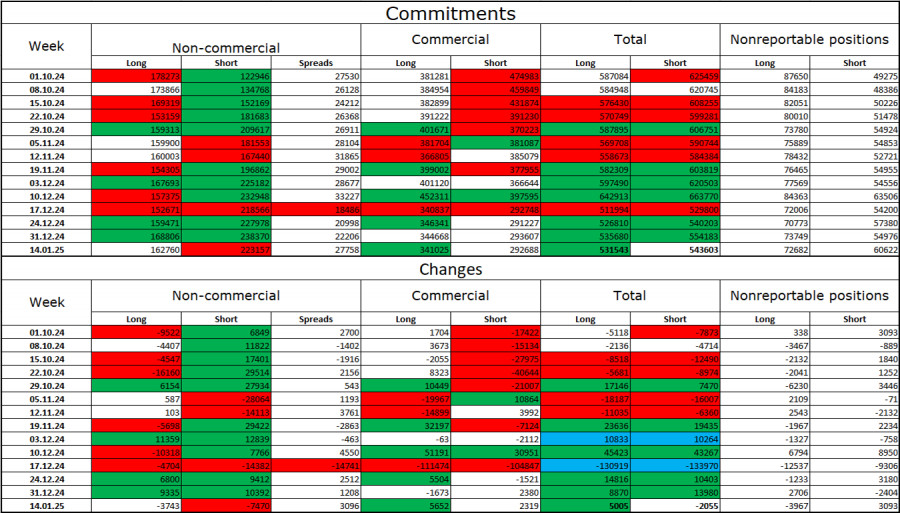

On Monday, the EUR/USD pair unexpectedly continued its upward movement, reaching the resistance zone of 1.0405–1.0420. A rebound from this zone led to a reversal in favor of the US dollar, initiating a decline toward the support zone of 1.0336–1.0346. A rebound from this zone would favor the euro and resume growth, while a close below it could signal a return to the bearish trend.
The wave structure remains clear. The last completed downward wave broke the low of the previous wave, while the latest upward wave (still unfinished) has yet to break the previous peak. Thus, the bearish trend remains intact with no signs of completion. For the trend to end, the euro would need to rise confidently above 1.0460 and close above this level within the current wave.
Monday's key event was Donald Trump's inauguration. However, traders were less interested in the ceremony itself and more focused on the statements he made during his speech. Trump made many comments, some of which alarmed traders and investors. Nevertheless, I believe this market fear will not persist for long. The US is a complex country regarding changes to political and economic policies. Any decision requires approval by a majority in Congress and the Senate, often involving weeks or months of deliberation, especially if there is partisan disagreement.
Thus, while the US dollar weakened yesterday, I don't believe this marks the end of the bearish trend. This week, bullish traders need to push the EUR/USD pair higher to signal the beginning of a broader reversal. To sustain their attack, bulls will need informational fuel, but Trump has already made his speech and cannot make 10 impactful statements every day.

On the 4-hour chart, the pair returned to the 1.0332 level and rebounded. The pair continues to move within a downward trend channel, signaling continued bearish sentiment among traders. I expect a reversal in favor of the dollar and a resumption of the decline toward 1.0110. A rebound from the 127.2% Fibonacci level at 1.0436 and the upper boundary of the channel may favor the US currency. Significant growth in the euro is unlikely until a breakout above the channel occurs.

During the last reporting week, speculators closed 3,743 long positions and 7,470 short positions. The sentiment among the "Non-commercial" group remains bearish, suggesting further declines in the pair. The total number of long positions held by speculators now stands at 162,000, compared to 223,000 short positions.
For 18 consecutive weeks, major players have been shedding their euro positions, signaling a bearish trend with no exceptions. Occasionally, bullish traders dominate during specific weeks, but this is more an exception than the rule. The primary driver of dollar weakness—expectations of monetary easing by the FOMC—has already played out. While new reasons to sell the dollar may emerge (perhaps this week), a stronger US currency remains more likely. Graphical analysis also supports the continuation of the long-term bearish trend, and I expect further declines in the EUR/USD pair.
The January 21 economic calendar includes two minor events. The market impact of these events is expected to be minimal.
Fibonacci Levels

RÁPIDOS ENLACES